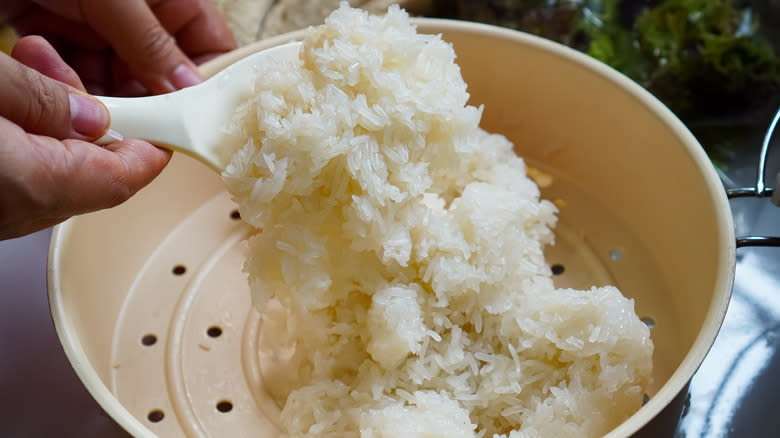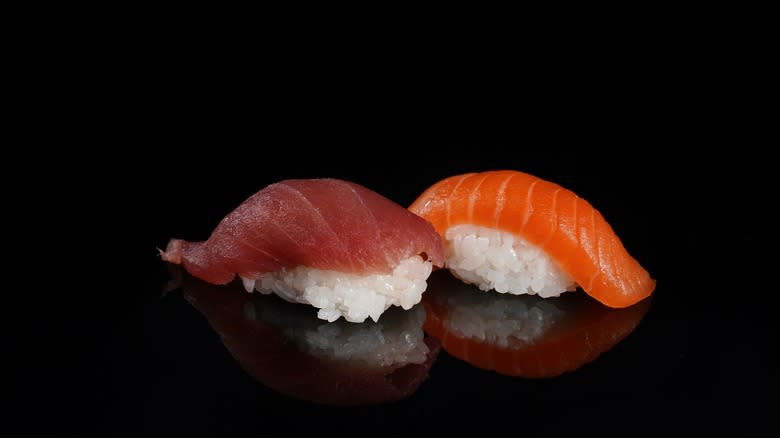No, Sticky And Sushi Rice Are Not The Same Thing

A common misconception people have is that sticky and sushi rice are interchangeable. The truth is that the distinction between sticky and sushi rice is vital to note, especially when you're exploring Asian cuisine. Firstly, sticky rice is also known as sweet or glutinous rice. Many people think glutinous means that it contains gluten, but that would be glutenous. Like all rice, sticky or glutinous rice is gluten-free, and "glutinous" means "glue-like" or "gummy."
Glutinous or sticky rice, whether in flour or whole form, imparts a sticky, bouncy, and stretchy consistency after cooking. This rice variety is high in amylopectin and lower in amylose, resulting in a sticky, chewy texture perfect for sweet and savory dishes. It's the foundation for making desserts like mochi and rice cakes and other sweet and savory steamed dishes across different cultures. For instance, you can pair steamed sticky rice with curries in Thai cuisine. Across Chinese cuisine, you find sticky rice steamed in lotus leaves to make zongzi. In Vietnamese cuisine, you can enjoy sticky rice for dessert as a pudding known as che dau trang.
Each grain of sticky rice comes very white, large, and opaque. Once cooked, it loses the opaqueness, shines, and becomes tacky and sticky. Sushi rice, on the other hand, is less sticky post-cooking and differs significantly from sticky rice.
Read more: 21 Delicious Ways To Use Up Leftover Rice
Sushi Rice Is Used For Sushi, And Sticky Rice Is Used For Other Asian Dishes

Sushi rice, often referred to as shari, sumeshi, or Japanese rice, is prominent in Japanese cuisine. It is typically made from short- or medium-grain rice known as Japonica. The raw grains are off-white and less opaque than sticky rice. Once cooked, sushi rice becomes sticky, but not as sticky or chewy as sticky rice, instead retaining bite and firmness. These qualities make sushi rice perfect for making, well, sushi. If the rice doesn't stick together, the rice part of your sushi and sushi nigiri will break apart when you try to eat it with chopsticks or bare hands.
While one can enjoy sticky rice alone, sushi rice is rarely served plain in Japan. Once cooked, it is usually seasoned with the likes of rice vinegar, sugar, and salt. Sometimes, mirin is added to the mix. All this seasoning makes the rice glossy and more appealing and adds acidity, which works well to balance and enhance the flavors of raw fish.
In conclusion, recognizing the distinct characteristics of sticky and sushi rice is essential. If you're ready to make homemade sushi, use sushi rice, a cornerstone of Japanese cuisine. To make a plethora of other Asian dishes, grab sticky rice. Both types of rice can be found at local supermarkets, so just be sure to pick up the right one for your needs.
Read the original article on Tasting Table.

